Three years ago, the nation’s schools received the first installment in what would become the largest infusion ever of federal funds for education — $190 billion to not only safeguard against COVID, but reverse the academic crisis that followed.
Evidence of the damage from a year of remote learning was inescapable: major setbacks in reading and math, thousands of students unaccounted for and high rates of depression and misbehavior.
In the years that followed, the funds undoubtedly did some good. Some districts used the money to offer summer school for all of their students, provide one-on-one tutoring parents could never afford on their own and hire thousands of new teachers.
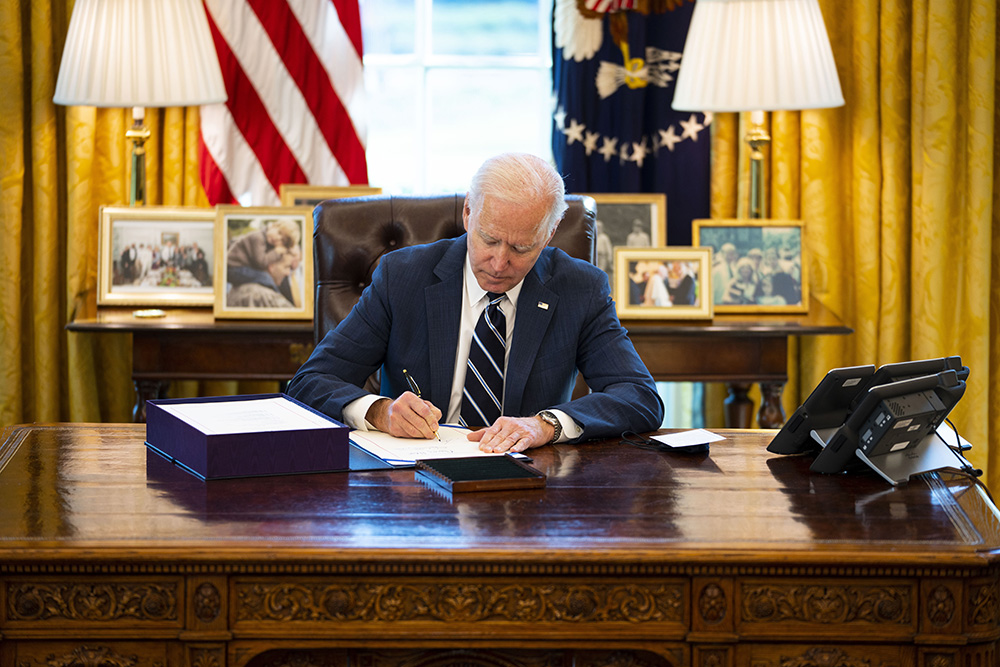
But a 10-month examination by The 74 shows that many districts haven’t used the funds with the urgency intended. Some have barely tapped monies advocates say are critical for academic recovery, while others have pumped millions of dollars into major classroom additions, upgrading athletic fields and other expenditures unrelated to the pandemic.
With just over a year left to allocate the funds, the question isn’t only if districts will hit the September 2024 deadline, but whether the unprecedented windfall will leave students better off.
Districts have not made it easy to answer those questions. Despite the unprecedented expense, Congress said little about districts’ responsibility to keep the public informed.
“Are districts with the biggest declines in student achievement spending their money the way you hope they would?” asked Matthew Steinberg, an education professor at George Mason University. “We just don’t know.”
A recent government report said gaps in spending data “make it difficult for the oversight community, decision-makers, and American taxpayers to fully understand where the money went and how it was used.”
When districts do report on their spending, the documents are often “full of jargon and gobbledygook,” complained Eileen Chollet, a parent in Virginia’s Fairfax County schools.
And the federal government hasn’t necessarily been a model of openness. A U.S. Department of Education “transparency portal” tells users how much money districts received. But its most recent spending report is two years old and the funds are grouped into vague categories like “supplies” and “other services.”
To get a deeper look at how school systems across the U.S. have spent their funds, The 74 filed public record requests with 13 districts and two charter school networks — from large urban centers like Oakland to the small rural community of Monmouth-Roseville in western Illinois. Together they received $3.4 billion. In response, districts sent everything from neat spreadsheets to erratically formatted PDF’s and printouts of internal data portals. Some, including the Arlington Independent School District in Texas and the Granite School District in Utah, responded within weeks. Others took months to deliver the records, and one — Kiryas Joel, a Hasidic enclave in New York’s Hudson Valley — never complied.
The documented expenditures, dating back to 2020, range from seven-figure payments to education consulting firms like Engage2Learn in Arlington to small Amazon orders under $100 for stress-relievers like aromatherapy supplies and fidget cubes delivered to Colorado Early Colleges, a charter network.
Invoices and emails shed light on the unexpected costs associated with reopening schools. Colorado Early Colleges spent about $70,000 for an exterior fence at its Aurora campus so students and staff could eat outside despite concerns about proximity to the community’s rising homeless population.
Amid staggering declines in achievement, officials say it’s easy to forget the severe threat that COVID posed especially in predominantly Black communities. The cost of masks, testing and contract tracing were justified, said Cathryn Stout, communications chief for the Memphis-Shelby County Schools, one of the districts The 74 profiled.
“I’m gonna push back hard against anybody who said that that was unnecessary spending,” she said. “All of our juvenile hospital beds were full.”
But as schools emerged from those nerve-wracking early days, they faced a new pressure: Spending the federal money wisely on a relatively short timeline. Many districts tapped the temporary funds for routine expenses, like payroll and membership fees for professional organizations.
Relief Fund Transparency in 3 Maps



The Oakland Unified School District, for example, used relief funds to make a $1.6 million payment on a $100 million state loan it received in 2003, records show. Stockton Unified, also in California, spent over $2 million on high-level central office positions, like a facilities director and its head of curriculum and instruction.
And in the Granite Public Schools in Utah, roughly $86,000 in relief funds covered accommodations at Caesars Palace in Las Vegas last summer for teams from 14 schools to attend an annual conference.
“They’ve got a conference facility that is massive, a wonderful ballroom,” said Jeff Jones, CEO of Solution Tree, the professional development company that held the event.
The training focuses on what educators call “professional learning communities,” in which teachers review student data, discuss a book they’ve read or debrief after giving a lesson.
District spokesman Ben Horsley said state officials never questioned Granite’s use of relief funds for what he described as a “critical component of helping schools improve instruction.” And he noted that one of the district’s highest-performing schools saw even more growth in student achievement after teachers put what they learned into practice.
As districts bank accounts grew, so did the opportunity for waste, misuse and questionable business deals:
- The Detroit Public Schools Community District signed a $3 million tutoring contract with a vendor led by Superintendent Nikolai Vitti’s wife, Rachel Vitti. Leaders disclosed the relationship before bringing in the literacy nonprofit Beyond Basics in 2021 and said they chose the provider because of its strong track record. Still, amid pushback, Rachel Vitti resigned from her role directing the nonprofit last summer.
- The Youngstown, Ohio, district lost $5 million in relief funds on an internet service contract with an Arizona company to offer Wi-Fi signals from city buildings and utility poles. But the project collapsed because the city didn’t own all the utility poles. The district couldn’t recover the money it spent on equipment, and the unused supplies now sit in a warehouse.
- The San Joaquin County district attorney in California launched a criminal probe into the Stockton Unified School District for spending roughly $7 million on ultraviolet air purifiers from a company linked to a former mayor with a history of legal trouble. A state audit pointed to the board’s decision to approve the contract even though district staff gave the proposal a low rating. Less than half of the 2,200 filters purchased were installed and the rest are stored in a warehouse. “This thing was streamlined and fast-tracked,” Marcus Battle, a former budget officer named in the audit, told The 74. Board members, he said, were “willing to circumvent a lawful procurement process to get this approved.”
‘Transformational for tutoring’
As auditors continue to pore over district records, more problematic expenditures are bound to surface. But the relief funds have also fueled major upgrades to reading instruction and creative efforts to improve learning and school climate, initiatives many districts hope to sustain once the funds dry up.
COVID aid brought tutoring, once a perk reserved for more affluent families, to students who previously had no access to that level of support.
The relief funds have been “transformational for tutoring,” said Susanna Loeb, a Stanford University education researcher leading efforts to expand and evaluate tutoring programs.
While the response to many virtual, on-demand programs has been disappointing, districts that stuck to high-dosage tutoring — generally defined as meeting in small groups, three times a week, with the same tutor — say it’s bumping struggling students up a grade level and helping them pass end-of-course tests. Too few students, however, have had access to that level of support. Federal data released in February showed that 80% of schools were offering some form of tutoring, but only 1 in 10 students had access to the high-impact model experts recommend.
Districts have also spent millions to help students recover from months of isolation. Recent data on more than 7,000 districts from Burbio, which tracks COVID spending, showed over 1,400 planned to spend at least $1.5 billion collectively on mental health to respond to an escalation in violent behavior and alarming rates of depression and anxiety among students. About 500 districts planned to spend a total of almost $230 million on counselors and mentors.
Some four to five dozen Michigan districts tried to purchase dogs as therapy animals to respond to students’ mental health challenges. Kevin Walters, who supervises the Michigan Department of Education’s grants office, told The 74 that he had to instruct school leaders that while federal relief dollars allowed them to contract with companies that rent out therapy animals, they could not purchase their own.
As part of its plan to spend $19 million on mental health, the Memphis-Shelby County Schools opened 60 “reset” rooms where students can cool off when they become disruptive or seek help if they’ve been bullied.
Tito Langston, the district’s interim chief financial officer, called it money well spent. Before White Station Elementary opened one of the special classrooms, it wasn’t unusual for Langston to get a call during the school day because of a behavior problem with his own child, who has autism. Now, his son has a place to refocus.
“He called me and said, ‘Dad, I went to the reset room. I feel better now,’ ” Langston said.
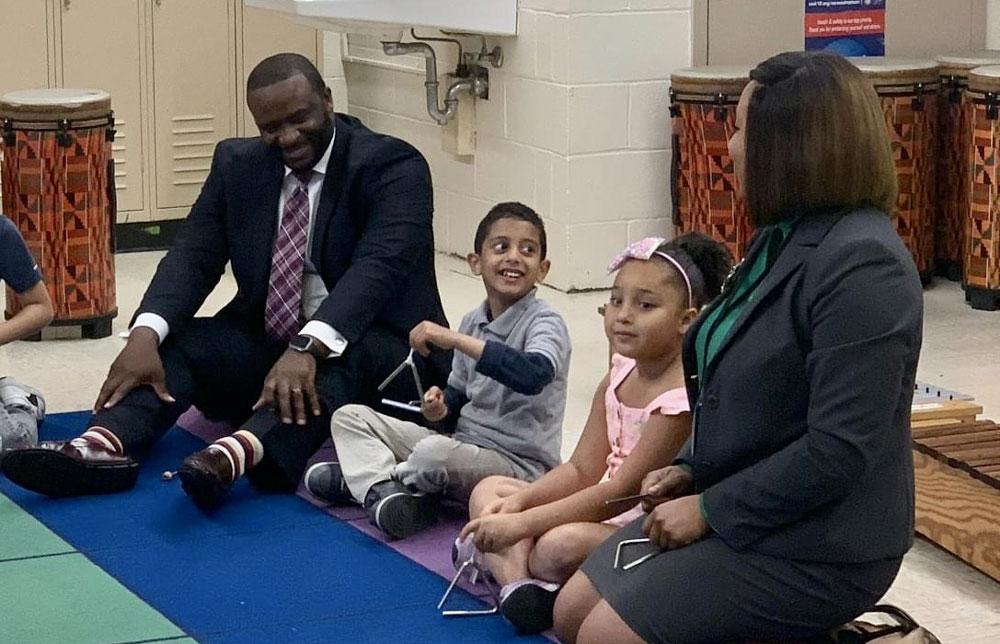
Many districts offer evidence — in the form of higher test scores or improved behavior — to demonstrate the value of projects launched with relief funds. In Illinois’s Monmouth-Roseville, for example, students who received tutoring outpaced their peers’ growth in literacy and math in 2022.
But there are also many instances of students not getting the extra help they need.
U.S. Secretary of Education Miguel Cardona urged districts to use relief funds to address teacher shortages by offering competitive stipends for substitutes. But Laurisa Schutt, former executive director of First State Educate, a Delaware nonprofit, said she hears stories of students with substitutes “watching movies all day or kids with nobody in the classroom. They’re just given worksheets, and they’re sitting there.”
‘Not in a test tube’
Accurately measuring if popular programs or policies have been effective at helping students recover learning lost due to school closures is not easy.
“There’s so much money that it must have done something good,” said Kenneth Shores, an assistant education professor at the University of Delaware. But the pandemic aid offered a rare chance to quickly test which recovery efforts were most effective.
“That learning opportunity,” he said, “was totally squandered.”
Researchers need to know which students received extra help to determine if it made a difference. But Dan Goldhaber, director of the Center for Analysis of Longitudinal Data in Education Research at the American Institutes for Research, said Congress didn’t require districts to collect such information.
In the Wichita Public Schools, which received a total of $266 million, leaders “gave up” on trying to tie specific programs funded with relief funds to student progress, said Susan Willis, the district’s chief financial officer. Leaders are looking for improvement in the areas they always track, like graduation rates and reading scores, she said.
“A student is not in a test tube with one initiative,” she said. “Was it the tutoring? The mentoring? It probably was a combination of all those things.”
The Memphis-Shelby County Schools aimed to track the impact of its investments when it included specific targets in its original plan for the third round of relief funds — something Goldhaber said the “overwhelming majority” of districts didn’t do.
Schools with reset rooms, for example, were expected to see at least a 3 percentage point reduction in out-of-school suspensions. An early 2022 report showed the district was meeting that goal, but it hasn’t posted more recent data and board meetings have been consumed by controversy over the district’s search for a new superintendent.
‘Five clicks away’
The influx of new cash hasn’t always been met with innovative thinking about how to spend it, experts said. Many districts are less than limber about changing course when projects don’t work out.
“I talked to one district team who admitted that their new social workers hadn’t been successful in getting attendance back up, so they thought maybe they’d invest in even more social workers,” said Marguerite Roza, director of Georgetown University’s Edunomics Lab. “Rarely do we see a district question whether an investment is working and deliberate on ending it.”
Even though districts were required to get public input on their spending plans, many haven’t followed up with reports on their progress. Of the 15 systems examined by The 74, just three devote web pages to relief funds. Only the Fulton County district in Georgia offers updated spending data, and a district official provides frequent reports on the use of relief funds at board meetings.
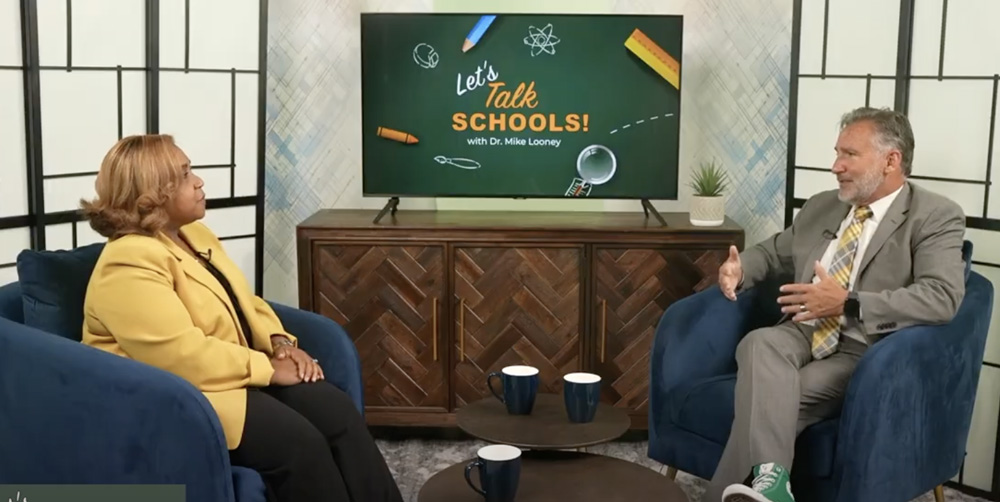
In neighboring Cobb County, however, parents say the district merely conducted a brief survey in 2021 when it received its third round of relief funds — $161 million. A September 2022 report outlines some of the district’s priorities, but doesn’t say how much it is spending on tutoring, summer school or other interventions for struggling students.
In an email, the district said officials spent relief funds “in a way which gave students and parents as many high-quality academic choices as possible.”
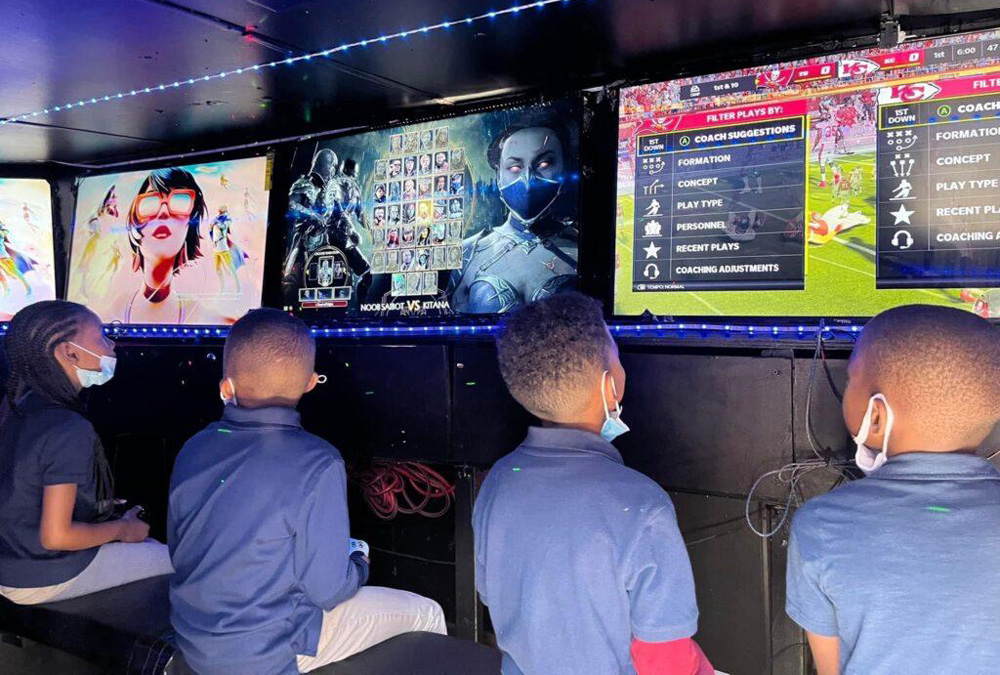
But Heather Tolley-Bauer, a Cobb parent, said there have been “zero updates” and “nonexistent” transparency. She hired a private tutor to focus on study skills her rising ninth grader missed during remote learning in sixth grade because the district only offered online tutoring.
She co-founded a watchdog group focused on relief funds and has been critical of some expenditures. Those include contracts for faulty hand-rinsing machines and UV lights that prompted recommendations from a county grand jury for the school board to step up spending oversight.
“They’ve never given a wrap-up of, ‘This is how we spent the money and this is how it mattered.’ ” she said. “Shame on the federal government for not requiring that.”
Those seeking current data on how districts have spent relief funds might also have a hard time hunting it down at the state level. Even when the information is available, parents can’t easily get at it.
“On the website, it’s five clicks away. That’s a lot,” Schutt, of Delaware’s First State Educate, said of her state’s website. “It’s not like there’s a banner that says, ‘Want to know where your money’s spent? Click here.’ ”
States without a tracker don’t always appreciate watchdog groups taking on the challenge themselves. In Wisconsin, Quinton Klabon, senior research director at the right-leaning Institute for Reforming Government, grew frustrated with how the state reported districts’ use of relief funds — a collection of links to PDFs from all 450 districts on the education department’s website.
His organization created its own website and scoured districts’ plans to identify trends. It found, for example, that districts planned to spend 28% of their funds on construction and 6.8% on mental health.
The state pushed back. “Instead of building dashboards, we are helping districts meet federal guidelines while spending dollars in ways that are meaningful to learner growth,” officials said in a memo to superintendents about how to respond to the report. State leaders considered his analysis accurate but still decided to call it “misleading” in their memo, according to internal emails Klabon obtained through a public records request and shared with The 74.
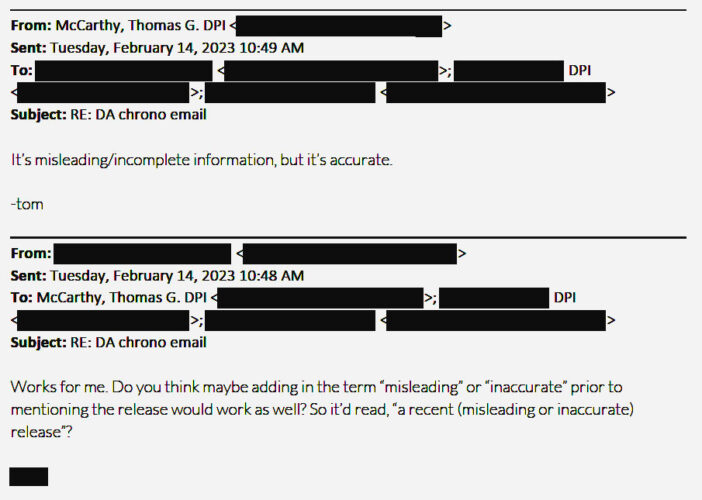
Even the U.S. Department of Education’s spreadsheet — with over 13,000 lines of district-level data — is designed more for internal purposes, like audits and monitoring, than helping parents, according to a spokesperson.
“We know they have the data, but what are they doing with it?” asked Phyllis Jordan, associate director of FutureEd, which produces frequent updates on trends in spending.
The stakes are high, Goldhaber said.
The dearth of reliable data has consequences not just for the students that districts currently serve, but for the public education system itself, which has seen students exiting in droves as school choice options boom.
“My guess is that in the [coming] years,” he said, “we’ll see lots of people say, ‘You know, schools got $200 billion and we don’t have anything to show for it.’ ”
Get stories like these delivered straight to your inbox. Sign up for The 74 Newsletter


